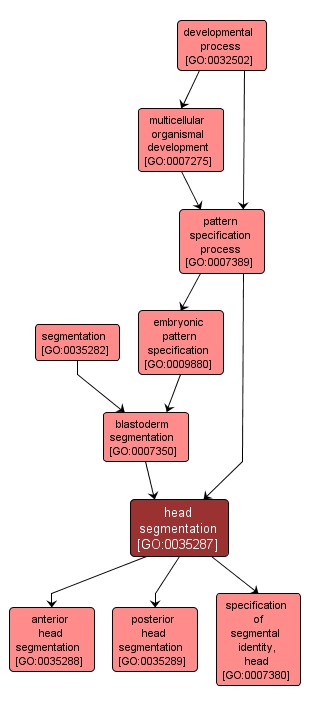| Desc: |
Partitioning the head anlage into a fixed number of segmental units. The number of segments composing the insect head has long been a subject of debate, but it is generally agreed that there are 6 or 7 segments. From anterior to posterior the head segments are the procephalic segments (labral, (ocular), antennal and intercalary) and the gnathal segments (mandibular, maxillary and labial). |














